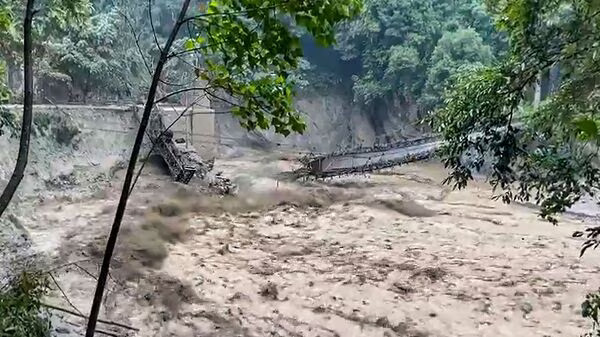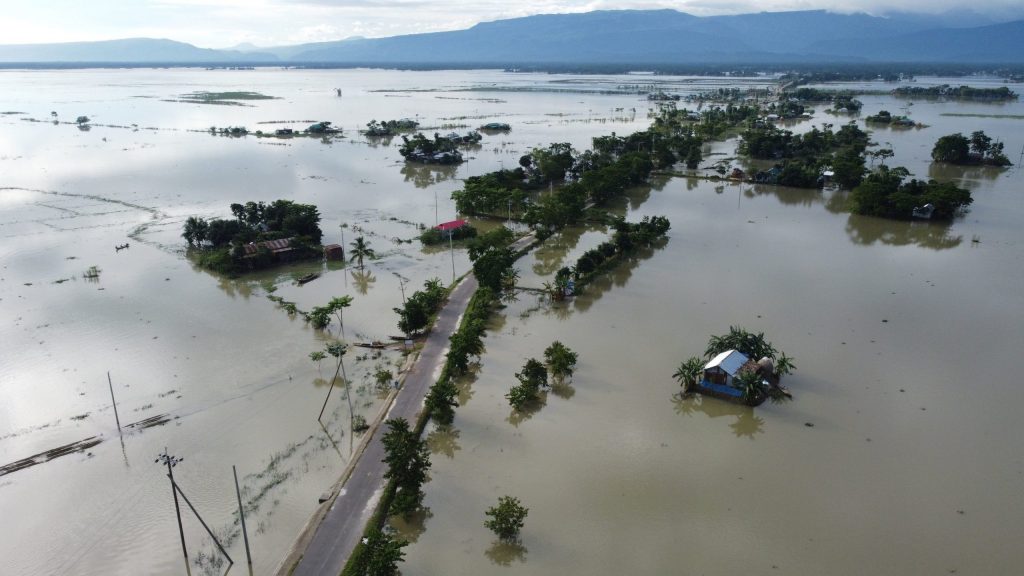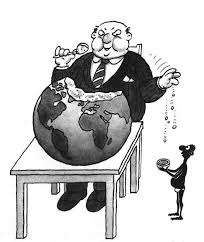
A cloud burst over North Sikkim resulted in a flash flood in the Teesta River on 4 October 2023. This led the water in the river rise abnormally and swept away several areas including the 1,200 MW hydel project at Chungthang. The flood destroyed over 11 bridges that serve as critical access routes in the hill state. Several houses have been washed away and nearly 20,000 people are affected. The construction of 12 hydel power plants on Teesta and its tributaries for electricity in Sikkim which lies in an earthquake zone and records one of the highest annual rains in the country disturbed the fragile ecosystem of the region.
The 2022 floods in Pakistan submerged almost one third of the country, affecting 33 million people, with over a thousand dead and more than 500,000 people living in relief camps across the country. The floods damaged most of the water systems in affected areas, forcing more than 5.4 million people to rely solely on contaminated water from ponds and wells. The floods were due to melting glaciers that followed a severe heat wave and heavier than usual monsoon rains. Deforestation has also been a factor for worsening the flood.

According to a report of Internal Displacement Monitoring Centre, nearly 61 million new internal displacements, were registered in 2022 globally – a 60% increase over 2021.
Who is Responsible for this?
When the government proposes a big infrastructure project like a road connecting remote areas or a dam on a river for hydroelectricity generation, often two sections of the population get pitched against each other – those for the project and those against it. Those in favour see the value of connectivity, access to new jobs, energy sufficiency while those against, call for sustainable development, biodiversity, ecological stability. Governments across the world use repression to silence these voices of dissent, in the name of development. This indiscriminate exploitation of natural resources for decades has led to these devastating landslides, floods, rising sea level ravaging vast areas of land and affecting the people living in these areas today. The underlying rationale for this self-destructive model – countries in the global north have reached their level of development through this model, this if the global south has to develop, it too needs to follow the same path, irrespective of its impact on the planet.
Common but Differentiated Responsibilities and Respective Capabilities (CBDR–RC) is a principle within the United Nations Framework Convention on Climate Change (UNFCCC) that acknowledges the different capabilities and differing responsibilities of individual countries in addressing climate change. To ensure equity, the convention sets the mitigation targets for countries in the global south lower than the countries in the global north. But, in 2017 the countries of the global south emitted 58% of total emissions, which used to be only 32% in 1990. In this growing emission path, China and India, together contribute almost 60% of the total emissions in the global south.
While governments and corporations pitch workers against people demanding a safer environment, the larger question escapes us: Are there two contesting groups of people in this struggle for survival of the planet?

Much of what creates the highest emission today is rooted in corporate greed. Corporations across the world, whether originating in the global north or south, exploit natural resources for increasing profits. ‘New’ products are continually developed, used and discarded across the world, which eventually find their way to poor countries for disposal. Sending away waste to poor countries may protect the rich countries from its direct effects but unfortunately toxic emissions do not respect political boundaries. Summer temperature in Germany and France reached 38 – 42 degree Celsius in 2022, leaving 61,672 people dead.
Capitalist growth is fuelled by consumerism that leads to increased consumption of natural resources and energy, emission of toxic greenhouse gases, and loss of biodiversity while simultaneously widening the income gap between the rich and the poor. The richest 1% of the world’s population are responsible for more than double the carbon dioxide emission caused by 3.1 billion people who made up the poorest 50% of the population (Oxfam, 2020). It is time we recognise that it is in our collective interest to oppose this destructive model of growth across the world that only benefits the greedy corporations in the short run. The fight against climate change and our collective access to natural resources and basic needs cannot be through individual actions. Change is possible only through collective action of nations and peoples.

Leave a Reply